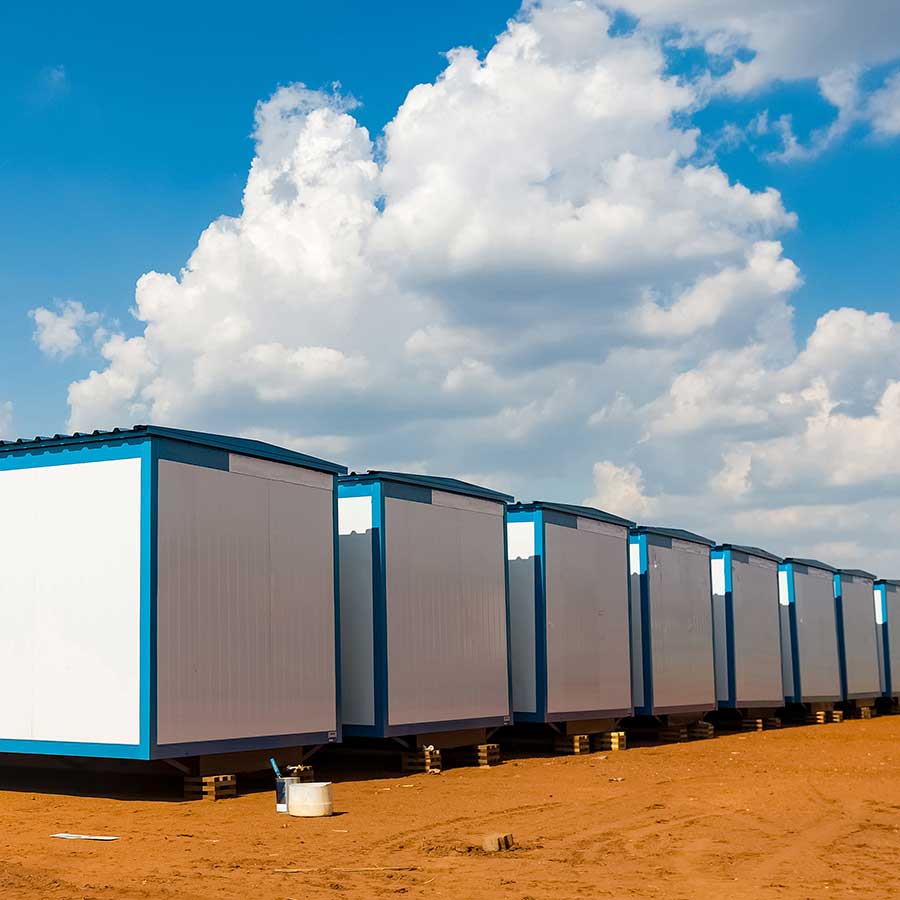Recycling and Green Architecture Paving the Way Forward
- December 1, 2023
- By: Ar. Priyanshi shah
- INFLUENCERS
Embracing the practice of recycling is paramount for the preservation of resources, waste reduction, and mitigating environmental impact. To ensure effective recycling, it's crucial to be aware of and adhere to local recycling guidelines, which may vary based on your location. Following the explicit instructions provided by your local waste management or recycling facility is essential to guarantee proper recycling practices. Moreover, reducing consumption and actively reusing items whenever feasible are pivotal measures in diminishing the collective environmental footprint. Green architecture is not just a design trend but a paradigm shift in conceiving, constructing, and inhabiting spaces, paving the way for a sustainable future.
Importance of Recycling Materials

Recycling is crucial in addressing environmental, economic, and social challenges. It conserves resources by reducing the need for raw materials, reducing waste, and reducing energy consumption. Recycling also reduces greenhouse gas emissions by generating fewer emissions from manufacturing products from recycled materials. Proper waste management prevents pollution of air, water, and soil associated with raw material extraction and processing, protecting ecosystems and preserving biodiversity.
Recycling stimulates economic growth by creating jobs in the recycling industry and fostering innovation in waste management technologies. It extends the lifespan of landfills by reducing waste volume, reducing the need for incineration, and improving air quality and public health. Recycling encourages sustainable consumption and production patterns, fostering awareness about waste's environmental impact. Community engagement and education are essential for fostering environmental responsibility among individuals and communities. Recycling is a fundamental component of sustainable living, with far-reaching positive effects on the environment, economy, and society.
Top 10 Trending Recycling Materials
Paper
- Recyclable items: Newspapers, magazines, cardboard, office paper, and packaging paper.
- Recycling tips: Flatten cardboard boxes, remove contaminants (e.g., food or plastic), and avoid wetting paper products.
Plastic
- Recyclable items: PET bottles, HDPE containers, PVC, LDPE, PP, and other plastic products labeled with recycling codes.
- Recycling tips: Clean and rinse containers, remove caps and lids, and check local recycling guidelines for acceptable plastic types.
Glass
- Recyclable items: Glass bottles and jars.
- Recycling tips: Rinse containers, remove caps or lids, and separate by color (clear, green, or brown) if required by your recycling program.
Metal
- Recyclable items: Aluminum cans, steel cans, tin cans, and aluminum foil.
- Recycling tips: Rinse containers, crush cans to save space, and separate aluminum from steel.
Cardboard
- Recyclable items: Cardboard boxes and packaging.
- Recycling tips: Remove any tape or labels, flatten boxes to save space, and recycle clean cardboard.
Electronics (e-waste)
- Recyclable items: Old computers, laptops, smartphones, and other electronic devices.
- Recycling tips: Find electronic recycling programs in your area, and ensure data is securely erased before recycling.
Batteries
- Recyclable items: Rechargeable batteries and some single-use batteries.
- Recycling tips: Use designated battery recycling programs, and never throw batteries in regular trash.
Textiles
- Recyclable items: Clothing, shoes, and other textiles.
- Recycling tips: Donate usable items to charities, and recycle worn-out textiles through textile recycling programs.
Tires
- Recyclable items: Used tires.
- Recycling tips: Many tire retailers and recycling centers accept used tires for proper disposal or recycling.
Organic Waste
- Recyclable items: Food scraps, yard waste, and other organic materials.
- Recycling tips: Composting is an effective way to recycle organic waste, producing nutrient-rich compost for gardens.
Recycling and sustainability

Recycling and sustainability are interconnected strategies crucial for minimizing environmental impact. Recycling involves reusing materials to reduce waste, while sustainability focuses on responsible resource use, preserving ecosystems, and mitigating climate change. Together, they form a powerful alliance, promoting a circular economy, reducing emissions, conserving resources, and fostering a community-wide commitment to environmental stewardship. By integrating recycling into sustainable practices, we actively contribute to a greener, more resilient future.
Approaching Green Architecture

Green architecture, a sustainable and eco-friendly design approach, addresses environmental, human health, and community impacts. It addresses climate change and resource depletion, offering a blueprint for a more resilient future. It emphasizes energy efficiency by utilizing natural elements like sunlight and airflow to minimize consumption. Passive solar design allows buildings to capture sunlight for heating and shading in summer, reducing reliance on artificial systems. Green architecture also embraces renewable energy sources like solar panels, wind turbines, and geothermal systems, enabling structures to generate clean energy and contribute to a low-carbon future.
Material selection is another key aspect of green architecture, with sustainable architects choosing materials with low embodied energy and high recyclability. Green buildings also use recycled and reclaimed materials, sustainably sourced wood, and eco-friendly composites to reduce their carbon footprint. It focuses on water conservation through innovative solutions like rainwater harvesting and greywater recycling and uses water-efficient technologies and drought-resistant landscaping to alleviate water resource strain.

Green buildings foster productivity, comfort, and happiness through strategic ventilation, non-toxic materials, and abundant natural light. They integrate with the surrounding community, promoting a sense of connection and shared responsibility. Green architecture is adaptable and flexible, ensuring buildings can withstand changing environmental conditions and diverse community needs. It is not a static concept, evolving with advancements in technology, materials, and societal needs.
Green architecture, endorsed by certification programs like LEED and BREEAM, is a commitment to sustainable principles and a broader ethos. It acknowledges the built environment's impact on the planet and seeks to create spaces that positively contribute to the ecological and social fabric. Green architecture is not just a design trend but a paradigm shift in conceiving, constructing, and inhabiting spaces, paving the way for a sustainable future.









